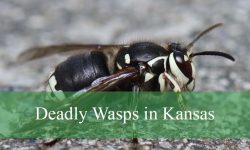Copperheads appear in nearly every corner of Kentucky, though many people still misread their behavior. Across the Appalachian foothills and the broad hardwood forests in the west, they survive by blending perfectly into leaf litter, conserving venom, and relying on quiet, cryptic habits. Although their venom is medically significant, copperheads rarely cause fatal bites. Instead, their venom is a precise ecological tool shaped by millions of years of evolution.
Kentucky provides near perfect habitat for copperheads: rocky ledges, deciduous forests, shaded creeks, and farmland edges that offer both cover and prey opportunities. Their presence often goes unnoticed because copperheads freeze when threatened, blending into leaf litter with remarkable precision. Beneath this camouflage, however, lies a venom system more complex and carefully used than many people realize.
Below are 12 venom-related facts about copperheads in Kentucky that reveal the biological depth and surprising behavior behind one of the state’s most recognizable snakes.
1. Copperheads in Kentucky Use Hemotoxic Venom Designed for Tissue Breakdown

Their Venom Targets Blood and Tissue
Copperhead venom is primarily hemotoxic, meaning it affects blood cells, blood vessels, and soft tissues. This venom begins breaking down tissues around the bite site, allowing the snake to track prey through scent as it weakens.
Hemotoxic effects support efficient hunting.
This venom type is typical of pit vipers.
Hemotoxins Slow Prey Through Internal Damage
Instead of killing instantly, the venom gradually disables prey by disrupting blood flow and oxygen transport. This prevents prey from fleeing far, giving copperheads a tracking advantage.
The mechanism is slow but strategically effective.
Internal damage ensures eventual capture.
Tissue Breakdown Aids Digestion
The same compounds that damage tissue externally help copperheads digest prey more easily. Venom essentially begins digestion before the snake even swallows its meal.
This reduces energy demands on the digestive system.
Venom efficiency strengthens overall survival.
2. Kentucky Copperheads Deliver Controlled Venom Doses Based on Threat Level
They Rarely Inject Full Venom Amounts During Defensive Bites
Copperheads commonly administer “dry bites” or low-venom warnings when striking defensively. This biological control helps conserve venom for hunting rather than wasting it on threats they cannot consume.
Venom is an expensive biological resource.
Conservation improves long-term survival.
Full Envenomation Happens Mainly With Prey
When hunting, copperheads deliver larger, intentionally placed injections to immobilize prey quickly. Defensive strikes tend to be shallow and rapid.
Purpose dictates venom volume.
The control reflects advanced venom regulation.
This Behavior Reduces Human Medical Severity
Most medically treated copperhead bites in Kentucky involve moderate symptoms rather than severe systemic issues. Their natural restraint lowers overall danger.
Human fatalities are extremely rare.
Controlled venom use benefits both snake and victim.
3. Juvenile Copperheads Use a Different Venom Formula Than Adults
Young Copperheads Have Stronger Neurotoxic Components
Juveniles possess venom with a more pronounced neurotoxic function, which helps them immobilize small prey such as frogs or insects more efficiently.
This difference reflects developmental needs.
Neurotoxins enhance early hunting success.
The Venom Shifts as They Mature
As copperheads grow larger and switch diets to mice, birds, and lizards, their venom becomes more hemotoxic. This shift ensures optimal prey capture as size increases.
Venom composition mirrors diet change.
Ontogenetic shifts are common in pit vipers.
Juveniles Use Caudal Luring to Complement Venom
Young copperheads wiggle bright yellow tail tips to lure prey into striking distance. The combination of luring and neuro-venom makes juveniles surprisingly effective predators.
This behavior fades as coloration changes.
Venom and behavior co-evolve in juveniles.
4. Kentucky’s Warm Climate Increases Copperhead Venom Potency and Use
Heat Boosts Metabolic Rates
Warm temperatures enhance venom production and speed digestion. In Kentucky’s summer heatwaves, copperheads become more active and hunt more frequently.
Temperature shapes venom availability.
Warm seasons amplify predatory behavior.
Venom Replenishes Faster in Warm Weather
The glands that produce venom regenerate more quickly when temperatures are high. Warm nights allow more efficient re-synthesis of venom proteins.
This supports nighttime hunting after hot days.
Temperature dictates venom turnover rates.
Hot Conditions Increase Human Encounters
More activity naturally leads to more visibility near trails, yards, and barns. While bites remain uncommon, summer conditions increase chances of accidental contact.
Behavior follows environmental cues.
Kentucky heat directly relates to venom usage patterns.
5. Copperhead Venom Contains Angiotensin-Converting Enzyme (ACE) Modifiers
Their Venom Helped Shape Modern Medicine
Copperhead venom contains molecules that influence blood pressure regulation. Early research on venom from pit vipers contributed to the development of ACE inhibitor medications.
Snake venom holds medical potential.
Biochemical diversity supported pharmacology.
These Molecules Affect Prey Blood Pressure
ACE-modifying compounds drop prey blood pressure suddenly, aiding immobilization. Lower circulatory function accelerates venom impact.
The effect is subtle but effective.
Prey collapse faster when circulation slows.
Kentucky Copperheads Carry Especially Balanced Venom Blends
Copperheads in the southeastern U.S. have been studied for unique biochemical ratios that combine tissue breakdown with blood-pressure reduction.
Regional variation influences venom chemistry.
Local ecology shapes venom evolution.
6. Copperheads Use Venom Primarily for Feeding, Not Defense
Defensive Bites Waste Valuable Resources
Venom takes time and energy to replace. Because copperheads rely on venom for feeding, they avoid wasting it on mammals that pose no predatory threat.
Resource management governs behavior.
Venom is too valuable to expend carelessly.
Camouflage Comes First
Copperheads freeze and rely on their leaf-like pattern before striking. Most humans step very close before noticing them.
Defense relies on avoidance first.
Striking happens only when escape fails.
Rapid Strikes Do Not Always Mean High Venom Yield
A defensive strike is often a reflexive motion without full injection. Many bite victims receive little venom due to this rapid response mechanism.
Defensive behavior prioritizes escape over injury.
Venom use follows strategic logic.
7. Copperheads in Kentucky Deliver One of the Fastest Strikes of Any Pit Viper
Their Strike Speed Rivals Larger Species
Despite being smaller than rattlesnakes, copperheads strike with remarkable velocity—sometimes less than 0.1 seconds from launch to impact.
Speed compensates for smaller size.
Rapid strikes maximize defensive success.
Precision Is More Important Than Power
Copperheads place venom injections with precision, targeting soft tissues of prey. Their strike angle and timing are highly evolved.
Accuracy enhances venom efficiency.
Success depends on anatomical precision.
Strike Speed Helps Limit Human Injury
Fast warning strikes allow copperheads to deter threats without prolonged confrontation. The quicker the strike, the faster the escape.
Speed supports minimal contact.
It reduces prolonged defensive events.
8. Kentucky Copperheads Use Heat-Sensing Pits to Aim Venom Accurately
Their Pits Detect Temperature Differences
Copperheads possess facial heat-sensing pits that detect warm-blooded prey in near darkness. Each pit acts like a biological infrared sensor.
Thermal images guide precision.
Heat detection enhances strike efficiency.
Heat Detection Works Even Through Light Cover
Leaves, grass, or loose soil do not block heat signatures entirely. This helps copperheads strike prey hiding under debris.
Their sensory system surpasses vision alone.
Mixed Kentucky habitats benefit their pit accuracy.
Heat Sensors Improve Night Hunting
Copperheads are most active at dusk and night. Heat-sensing helps compensate for reduced light.
Night hunting depends on this adaptation.
Venom placement relies heavily on heat targeting.
9. Copperhead Venom Creates a Chemical Trail That Aids in Tracking Prey
Venom Alters the Scent Chemistry of Prey
Once bitten, prey animals emit distinct odor signatures caused by venom-induced breakdown. Copperheads use their forked tongues to follow this scent precisely.
Chemical tracking boosts hunting success.
Venom functions beyond immobilization.
Enzymatic Breakdown Produces Volatile Cues
As venom begins digesting tissues, it produces specific compounds that spread through the air and leaf litter. Copperheads recognize these cues clearly.
Scent trails accelerate prey recovery.
Enzymatic effects support scavenging success.
This Advantage Helps Them Hunt in Dense Kentucky Forests
Thick foliage often obscures vision, but venom trail-tracking compensates. Copperheads thrive in leaf-heavy landscapes common across much of Kentucky.
Forested terrain favors their sensory adaptations.
Venom supports retrieval even after long chases.
10. Many Kentucky Copperhead Bites Are Actually False Strikes or Glancing Strikes
Copperheads Prefer to Warn Before Biting
Their first response is often vibrating their tails, lifting their bodies slightly, or performing a bluff strike that does not connect.
Warning behaviors replace biting when possible.
Bluffing conserves venom.
Glancing Strikes Reduce Venom Delivery
Some defensive strikes contact only clothing or the edge of footwear. These glancing impacts rarely inject venom.
This reflects intentional restraint.
Strike mechanics favor minimal risk.
Many Human Bites Are Accidental
Most copperhead bites in Kentucky occur when people step on or near hidden snakes. These are proximity-based defensive events rather than targeted attacks.
Human encounters stem from camouflage.
Copperheads prefer avoidance over aggression.
11. Copperheads Have Venom Glands That Expand During Peak Seasons
Venom Glands Grow During Late Spring
As prey availability increases, venom glands become more active. Copperheads produce more venom during their heaviest feeding months.
Season shapes venom storage.
Spring expansion supports hunting cycles.
Seasonal Abundance Boosts Venom Volume
In years with abundant rodents, copperheads store more venom due to frequent feeding opportunities. This correlates to greater foraging success.
Prey cycles influence venom cycles.
Food abundance encourages venom replenishment.
Hormonal Shifts Affect Venom Gland Activity
Breeding season also affects venom production. Males may show swelling around the venom gland region due to increased metabolic activity.
Biological cycles govern venom machinery.
Reproduction impacts venom readiness.
12. Copperhead Venom Is Medically Significant—But Rarely Deadly
Copperhead Venom Is Painful but Low in Lethality
Most copperhead bites cause swelling, bruising, and intense localized pain. Systemic symptoms are possible but uncommon.
Fatalities are extremely rare.
Their venom is potent but rarely life-threatening.
Antivenom Is Effective for Moderate to Severe Cases
Kentucky hospitals often use CroFab antivenom for copperhead bites, especially if swelling progresses or mobility is impaired. Early treatment ensures safe recovery.
Medical outcomes are generally positive.
Venom management is straightforward with modern care.
Children and Elderly Are Most Vulnerable
While copperhead venom seldom kills, vulnerable populations may experience stronger reactions. Quick medical care is essential for these groups.
Physiological sensitivity matters.
Venom severity depends partly on age and health.
FAQs About Copperheads in Kentucky
Are copperheads common in Kentucky?
Yes. They are widespread in forests, hills, farmland edges, and stream corridors.
How dangerous is a copperhead bite?
Painful but rarely fatal; medical care is still recommended.
Do copperheads chase people?
No. They avoid confrontation and rely on camouflage.
When are copperheads most active?
Late spring through early fall, especially at dusk.
Do copperheads live in suburban areas?
Yes, especially near woodlots, rock piles, and shaded yards.
What do copperheads eat?
Rodents, birds, frogs, insects, and small reptiles.
Do juvenile copperheads have different venom?
Yes—young snakes have more neurotoxic components.
Can copperheads swim?
They can and often do, especially near streams.
Conclusion
Copperheads in Kentucky possess a venom system far more sophisticated than many people imagine. Their hemotoxic chemistry, controlled venom delivery, heat-sensing precision, and prey-tracking abilities reveal a predator evolved for efficiency rather than aggression. Despite their reputation, copperheads rarely pose a serious danger to humans when left undisturbed. They rely on camouflage, restraint, and ecological balance rather than confrontational behavior.
Understanding their venom biology helps demystify these snakes and highlights their important role in Kentucky’s ecosystems. Copperheads are not creatures of fear, but finely tuned animals that contribute to the health and structure of the state’s wild landscapes.






